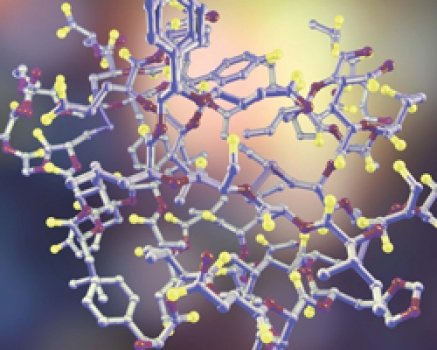
Proteins are large, complex molecules which perform a huge diversity of roles including catalysis, transport, signal transmission, structural functions and plenty more besides. They exhibit four different levels of composition:
The primary structure of a protein is the sequence in which the individual building blocks, amino acids, are joined together to form a polypeptide chain; this occurs via the formation of peptide bonds between the amine group of one amino acid and the carboxyl group of the next. The end of the polypeptide at which there is an amino acid with a free amine group is referred to as the N-terminus, while the end at which the carboxyl group is free is said to be C-terminal. As a rough guide, sequences with fewer than 50 amino acids are usually known as peptides, while longer sequences are recognised as proteins.
The most common types of secondary structure are the α-helix and the β-pleated sheet, both of which are dependent on hydrogen bonding. These give sections of the protein distinct local structural conformations, and provide stability.
Tertiary structure refers to the overall 3-dimensional shape of the entire protein and arises as a result of various synergies. These include the formation of disulphide bonds between the sulphydryl groups on cysteine residues, hydrogen bonding between different side chain groups, and hydrophobic interactions that result in hydrophobic side chains becoming protected within the interior of the protein. The tertiary structure provides additional stability to the protein.
Proteins which are composed of multiple polypeptide chains exhibit quaternary structure, which is a term that is used to refer to the manner in which the different subunits interact with one another to form a larger protein complex. Hydrogen-bonding, disulphide-bonding and salt bridges all contribute to the quaternary structure.
Proteins are widely used as research tools, for example:
- - Recombinant proteins are essential positive controls when assessing the specificity of an antibody via Western blotting
- - Peptides are used as blocking reagents to allow the detection of non-specific antibody binding in applications such as ELISA, immunohistochemistry and flow cytometry
- - The effect of test compounds on enzyme activity relies on a source of highly purified, active enzyme
BIOZOL offers an extensive range of high quality proteins and peptides, which can easily be searched using the selectable filters. Our product portfolio also includes proteins which have been directly conjugated to fluorophore or enzyme tags, further enhancing the utility of these essential reagents.



